An understanding of poker rules will get you started, but being successful takes strategy and experience. Resources are everywhere for poker players striving to improve. We include some free options in our article. The most popular poker formats are Texas hold ‘em and Omaha. We’ll tell you about the two, pointing out their similarities and differences.
Our guide covers how to play poker for beginners, plus some places to continue learning. Once you’re comfortable with the poker basics, check out our Texas hold ‘em and Omaha strategy guides.
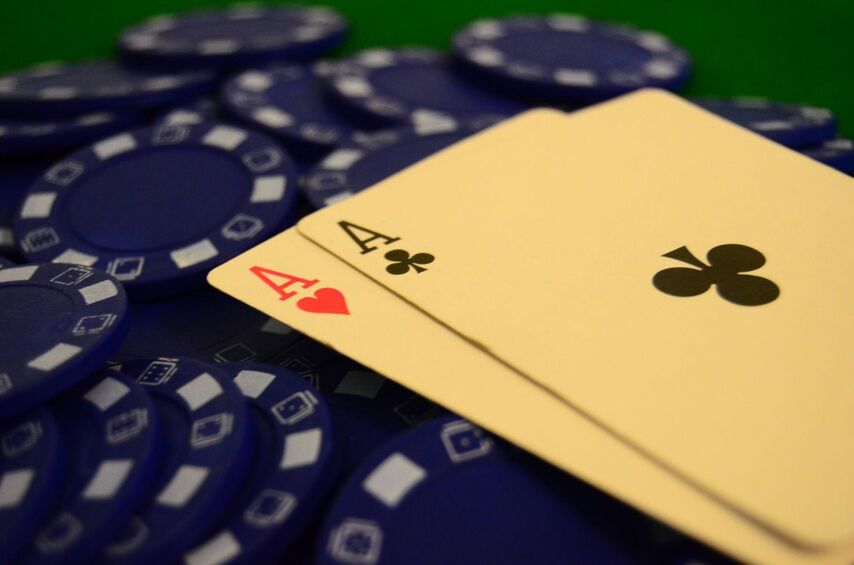
Texas Hold 'em
This is the most widely known poker format. In casinos and online poker sites, hold ‘em tables always have the highest traffic. Like chess, there are levels upon levels of strategy and nuance. Experienced poker players are analytical and study the game.
Most people playing Texas hold ‘em are in no-limit games. That means bets have no maximum and players can put all of their chips in the pot at any time. The up-swings and down-swings as chips quickly change owners are part of what brought Texas hold ‘em into the spotlight.
How To Get Started Playing Texas Hold 'em
Starting up a poker game at home isn’t difficult. Find yourself a big enough table, then get these three things:
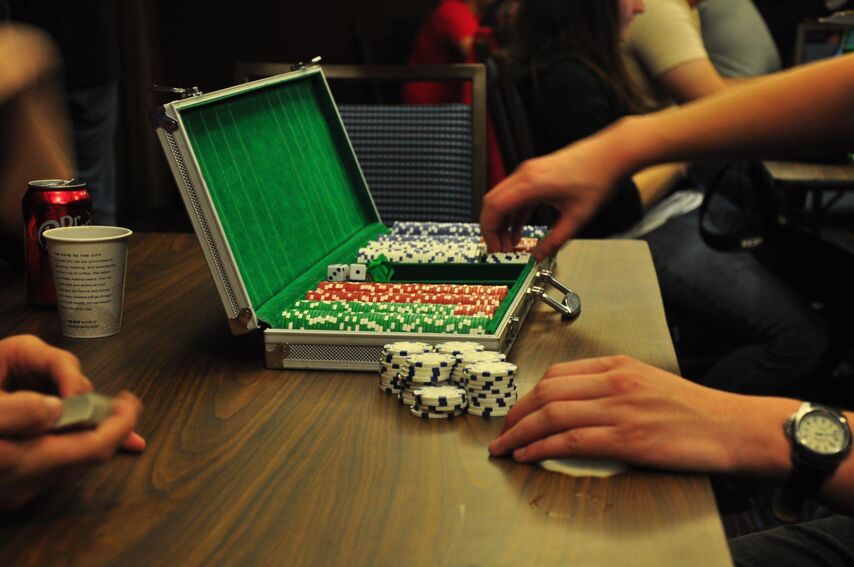
1. A deck of cards
You can buy a standard 52-card deck from convenience stores, department stores, and gas stations. If there are joker cards inside, remove them before you play.
If you’re using a deck from home, check that you have thirteen cards for each of the four suits (hearts, diamonds, spades, and clubs). In casinos, if even a single card is blemished, a fresh pack of cards is immediately switched in. If yours are bent or marked, then buy a new deck. It could reveal your hand to other players.
2. A set of poker chips
You’ll have to look around for sets of poker chips. They aren’t sold in the same places as cards. Online retailers like Amazon will save you time, but department stores and game shops are also worth looking into.
Each set includes at least four different chip colors.
3. A button to show the dealer’s position
Poker games need something called a dealer button to indicate the dealer’s position at the table. The button always moves one space left after each hand, even if the person dealing cards doesn’t, like in casinos. In home games, it’s common to pass the deck of cards to the person on the left, along with the dealer button.
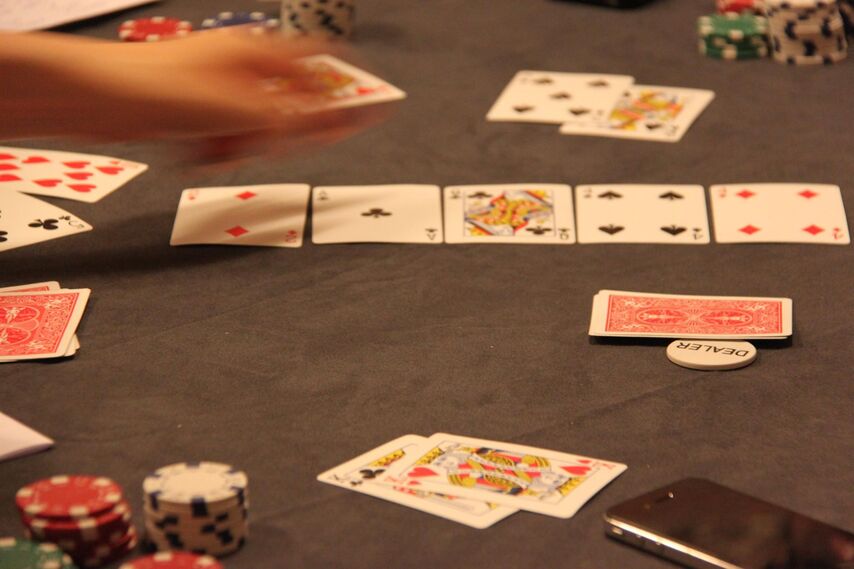
A tablecloth or felt table will make it much easier to handle cards if you're hosting a game. All-in triangles, automatic shufflers, and timers are a few optional extras.
Mandatory Bets And Dealing The Cards
Before players get dealt their cards, two players need to make mandatory bets. The small blind is to the immediate left of the dealer, and the big blind is to the left of the small blind. Having this money in the pot creates incentive and action between the other players. With this form of tax, waiting for premium hands comes at a price.
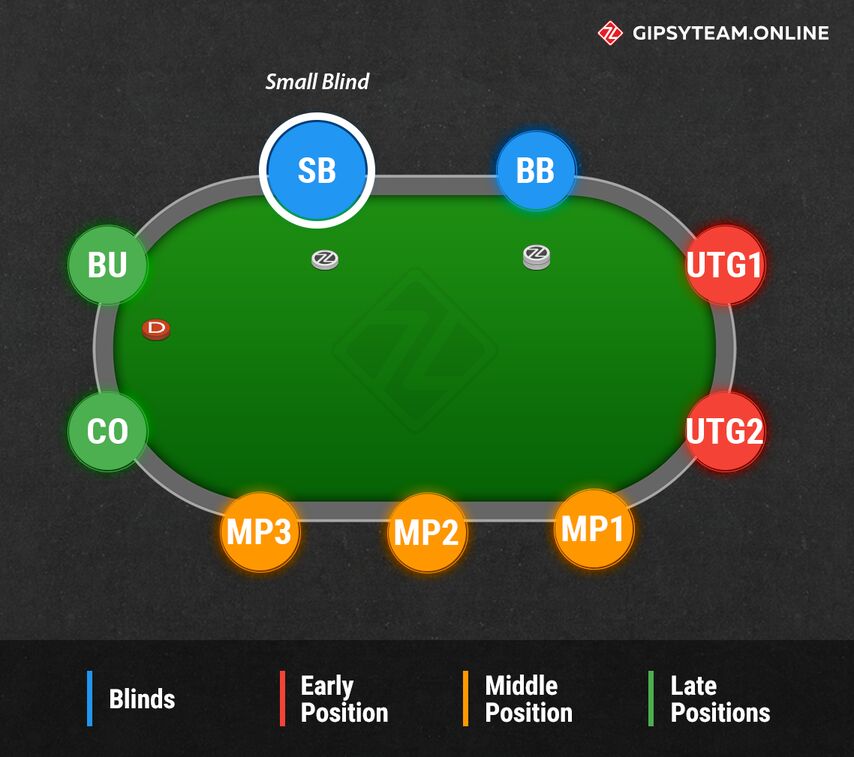
How often you pay for the big and small blinds depends on how many players are at the table. The only way to avoid paying for the blinds is to leave the table, but you’ll have to pay when you return.
When the mandatory bets are paid, cards can be dealt out. The player in the small blind position gets the first card. Cards are then dealt clockwise one at a time until each player holds two.
Betting Rounds
Getting familiar with the betting rounds is an important part of learning how to play poker. Here’s our poker guide on the four betting stages.
Preflop
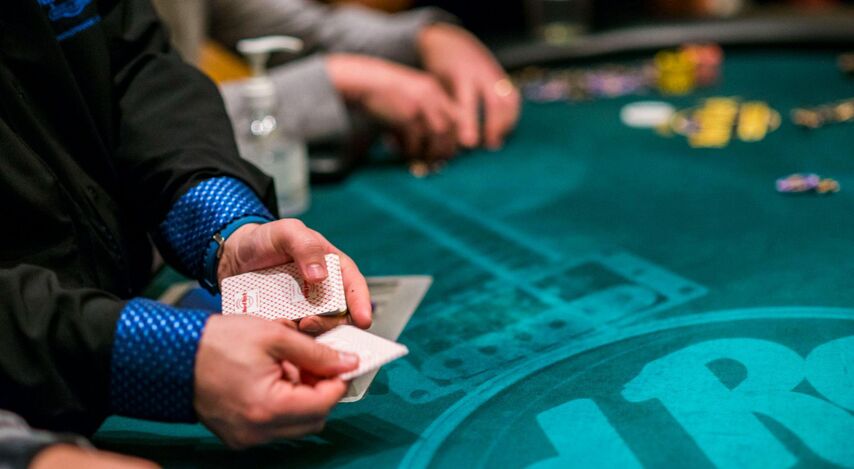
This is the first stage of the game: cards are dealt, players decide their first move. At this point, we don’t have much information. We need to check our cards and decide how to proceed.
Flop
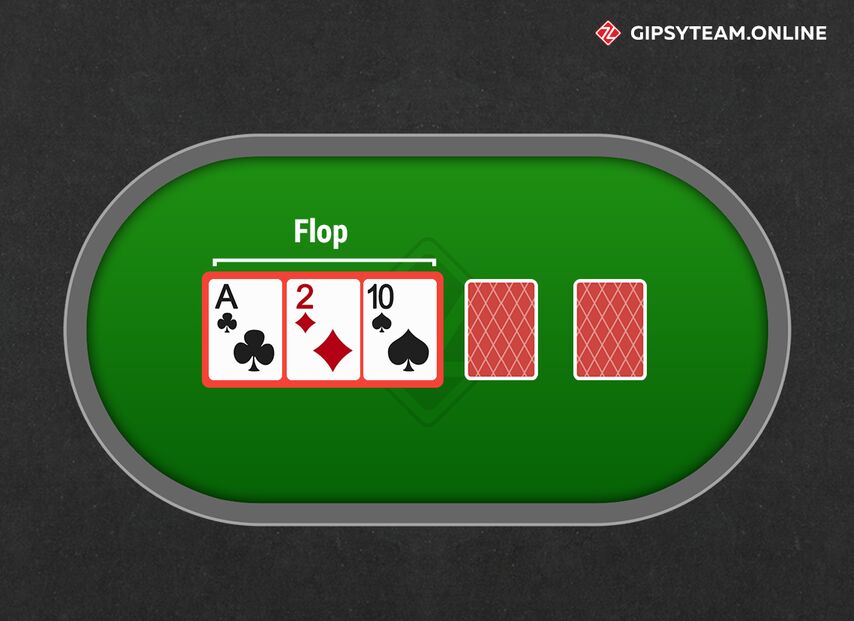
We finally get to see the first three community cards, called the flop. Three cards will be dealt face up into the center of the table. The first player holding cards to the left of the dealer button starts the action. If bets are made, the stage is only complete when each player has matched the amount or fold.
On the flop there is no mandatory bet and players can passively check to see another card for free. If nobody wants to step up and bet, players might “check through” and quickly move onto the next stage, the turn.
Turn
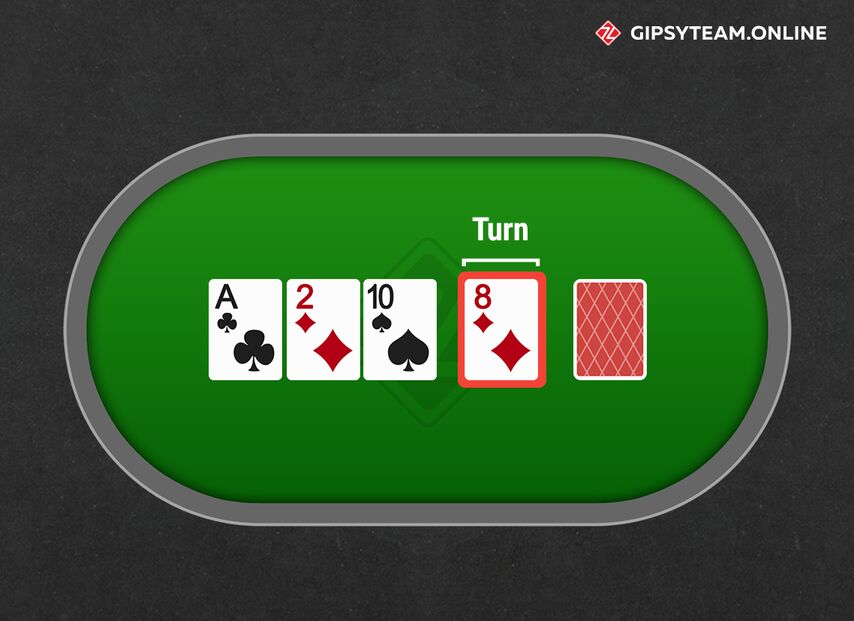
A fourth card is revealed and the action starts again to the left of the dealer button.
River

The river is where dreams come true or fall short. When the fifth and final card is placed down, you’ll see the full strength of your hand. The river is the last betting round, which makes it crucial. Whether you want your opponent to fold a hand or call your bet, the river is your final opportunity.
If players check through or bets are matched, it’s time to turn over the cards! During the showdown stage, hands need to be ranked to find a winner.
Player Actions
Check
Checking moves the action to the next player, without you putting money in the pot.
Most players signal a check by tapping their hand on the table, with the palm down. A single tap with a finger is enough, and some players even tap the table with chips. Checking can also be announced by saying “check”.
Bet
Betting is when you voluntarily place money into the pot. Your opponents will have to fold their hand, match your bet amount, or raise it even higher.
Call
Making a call is a passive way to take part. You pay an amount equal to one big blind. Players with weaker hands might call to play without using many chips, hoping to make a strong hand. Premium hands might call to appear fragile, planning to spring a trap later.
Make the call by sliding the correct number of chips forward, toward the middle of the table.
Raise
Raising is when you put the big blind amount, plus more on top. The other players now have to match your bet if they want to continue, so weaker hands will be forced to make a tougher choice.
Always move the raising chips in one motion, not in increments. Putting in some chips and then some more is called string betting. In this case, your raise might be considered a call instead.
Fold
New players don’t fold enough and play too many weak hands. Sometimes the best choice is to be disciplined because we don’t have unlimited chips. When the amount you need to call is just too expensive, or you are holding a weak hand, it’s best not to waste the money.
To fold, slide your cards toward the dealer and away from your chip stack. You can also verbally announce the action by saying, “fold”.
Verbal Actions
In poker rules, any action is binding once you announce it. At times this is useful, like going all-in. If you want to announce an action, always make sure you have the dealer’s attention.
Most players prefer to be non-verbal and silent during hands. Speaking can reveal things, however small they may be.
How To Determine The Winner
When the cards are revealed it’s very important to correctly identify who is in the lead. Surprisingly, even professional dealers can misread cards occasionally. For this reason and more, you must know how to rank hands.
Your cards combine with the community cards to form a 5-card hand. In Texas hold ‘em, the 5 cards can be made with one of your cards, both of them, or neither of them. In Omaha poker, you must use exactly two cards out of the four each player holds.
Our poker guide starts with the lowest-ranking hands and moves toward the premium ones.
High Card
Your cards do not connect with the community cards in any way. As you can see in the example, one player has an ace and the other player’s highest card is a king. Because neither player connects with the community cards, the highest card wins the hand.
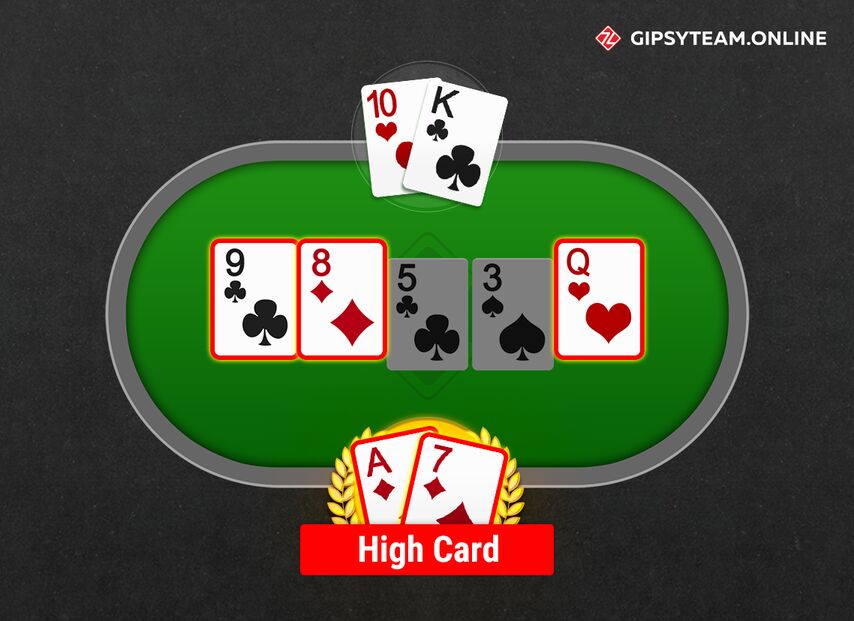
One Pair
Pairs can be made by having:
- A pair dealt to you, like the two queens in the illustrated example.
- One of your cards matching to a community card.
- A pair among the community cards.
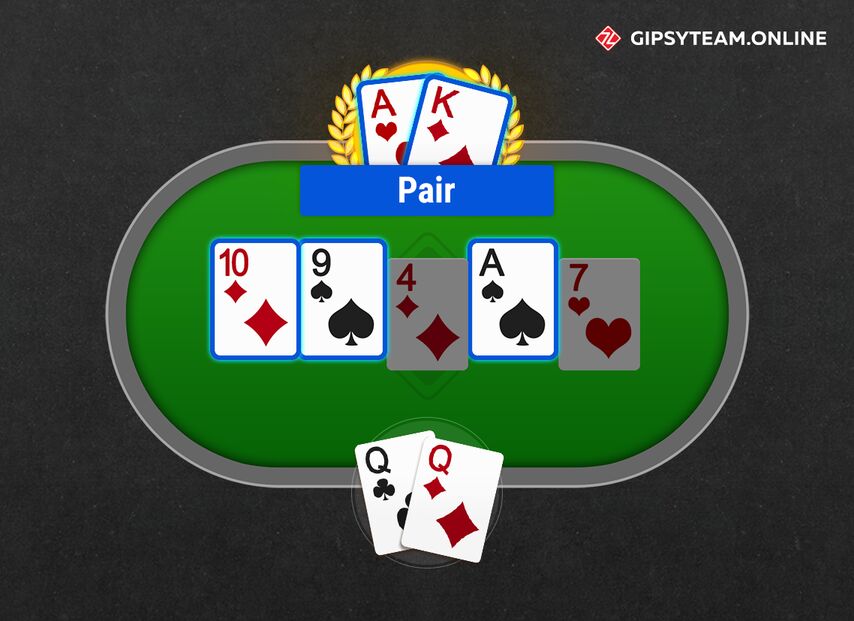
Two Pair
You have two pairs, made by using the cards in your hand or the cards on the board.
In the illustration, one player has three pairs. Because only the best five cards can be used, the pair of nines can not be played.
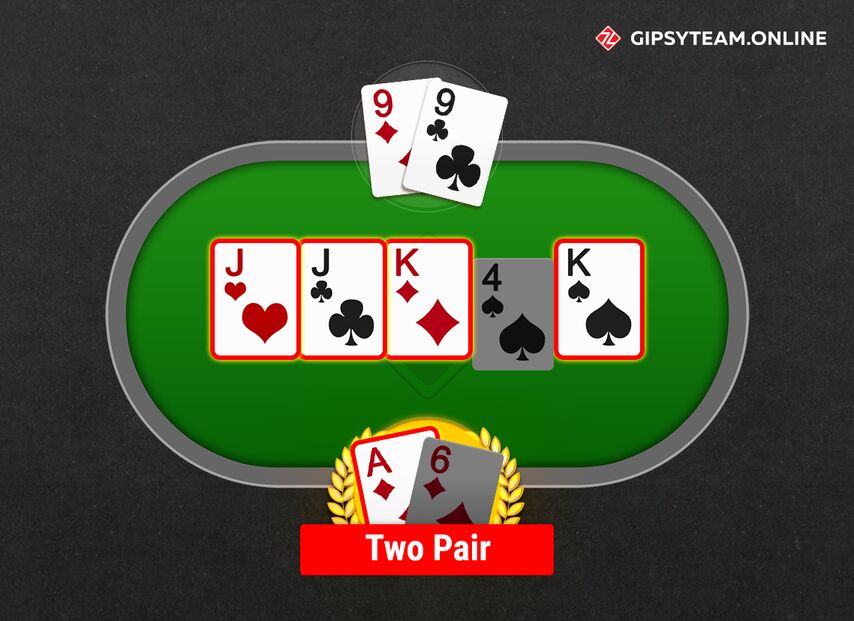
Set/Three Of A Kind
When you have a pair in your hand and a third matching card on the board, you have a set. Three-of-a-kind is the term for having two matching community cards and a third matching card in your hand
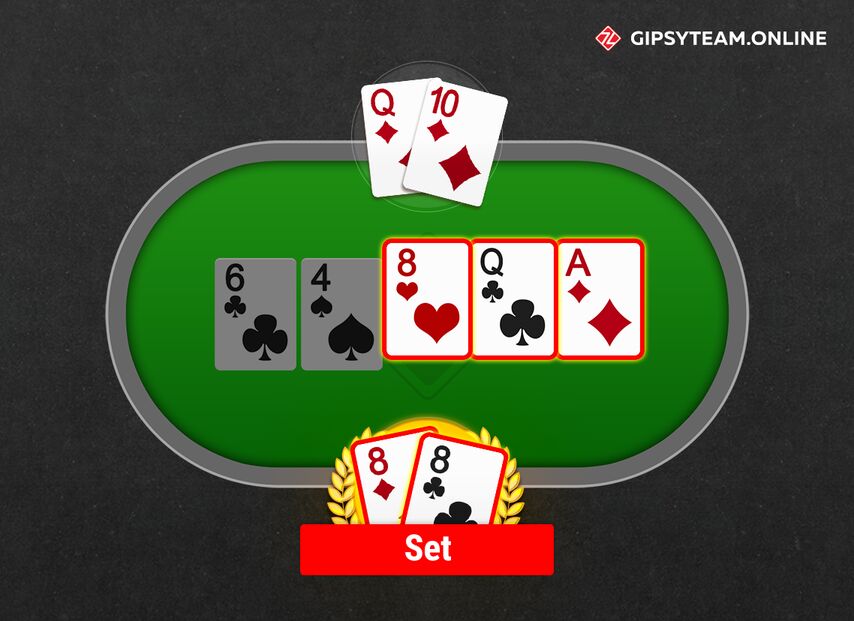
Straight
Five consecutive cards form a straight in poker. Ace is considered a one or it can follow a king. As you can see from our example, the highest straight wins.

Flush
Five cards of the same suit forms a flush in poker. The cards in your flush matter to the strength of your hand, just like in the example. The winning flush has higher cards than the losing flush. Since an ace is the highest card, having one in your hand makes the best possible flush.
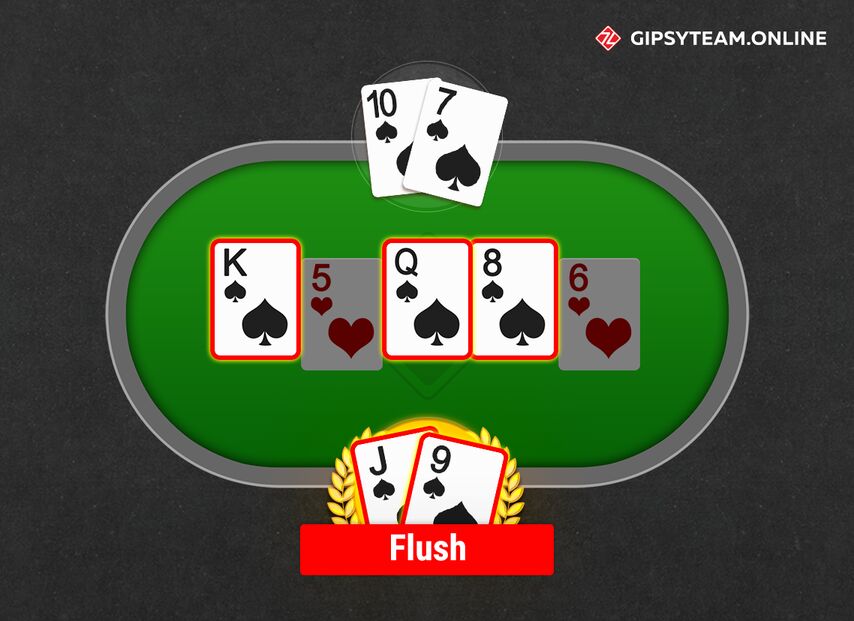
Full House
Three-of-a-kind and a pair are what you need to make one. The best possible full house would be made of three aces and two kings.
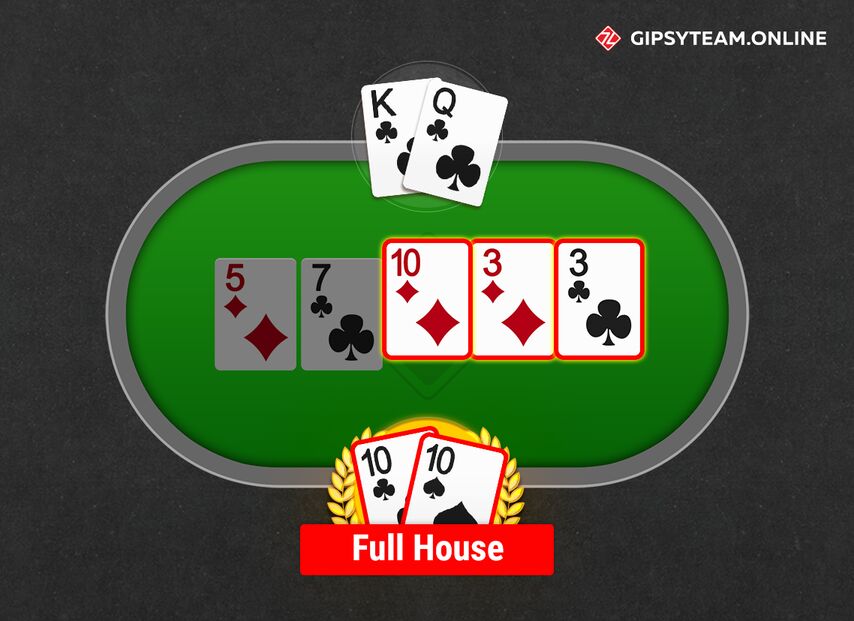
Four Of A Kind
Four cards with the same value create quads, also known as four-of-a-kind.
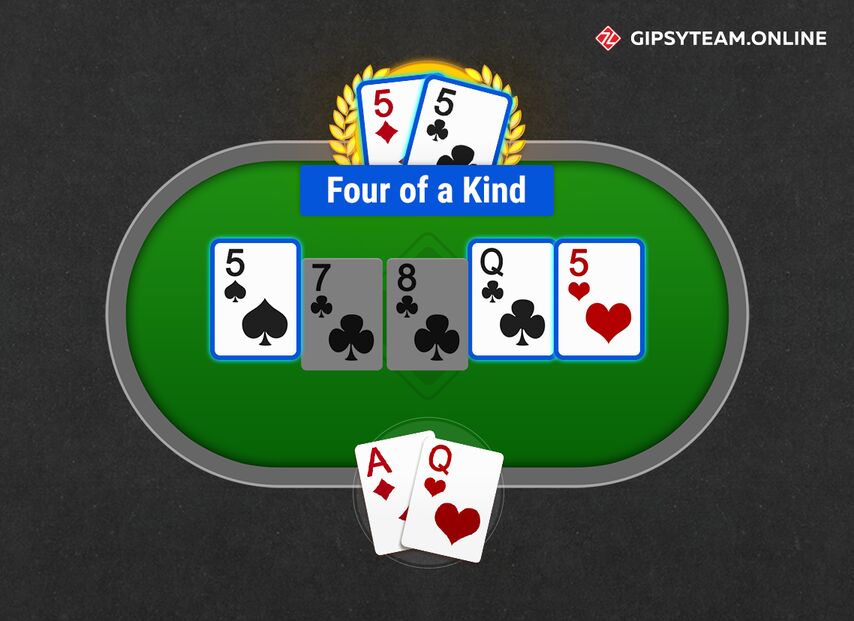
Straight Flush
This is the second-best hand rank in poker. It’s not common to see straight flushes, which are made with five consecutive cards of the same suit.
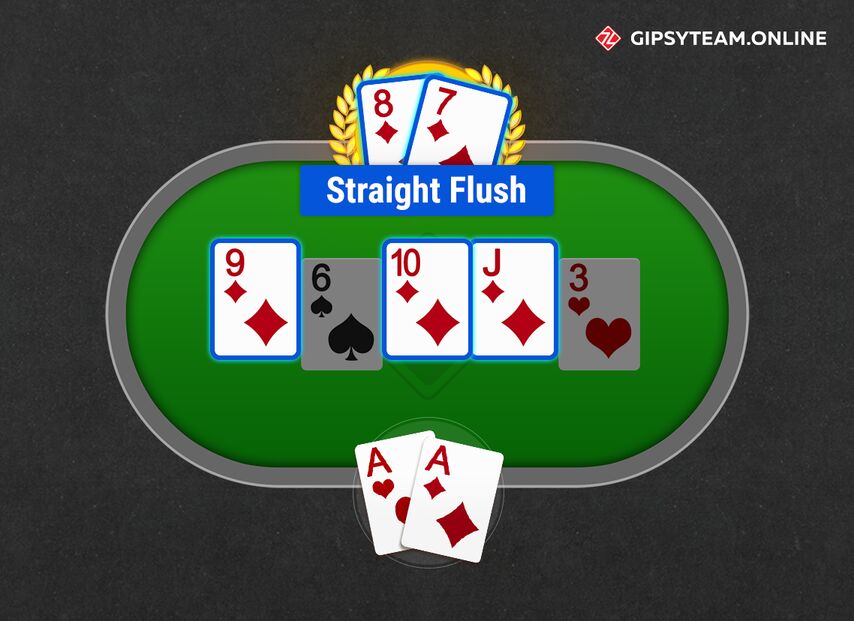
Royal Flush
Even players with thousands of hours playing poker may only see a royal flush a few times. A player must have a straight from ten to ace, with matching a suit for each card.
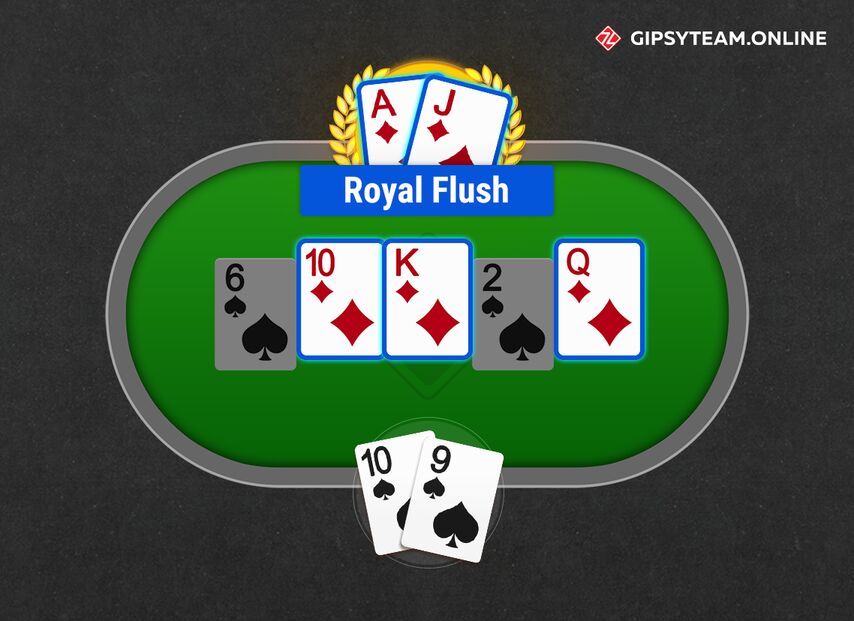
Omaha Poker
Omaha can look like a wild game to onlookers. Each player has four cards, so there are more hand combinations to consider. With twice as many cards as Texas hold ‘em uses, players can pursue multiple outcomes at once. At showdown, you have to select your best two cards to combine with three community cards.
Pot-limit Omaha and Omaha hi/lo are the two most widely played variants of this game. In hi/lo, the best hand and the worst hand split the pot.
Each card that hits the table during the flop, turn, and the river has a profound effect.
Texas Hold ‘Em Vs Omaha
If you’re learning how to play poker, you’ll have to make adjustments switching between Texas hold ‘em and Omaha.
Hand Strength
The winning hands in each game look vastly different. In Texas hold ‘em, pairs can be valuable because players often don’t connect with the community cards. In Omaha poker, a single pair is far weaker at showdown.
Premium hands are increasingly valuable in Omaha, where we have a much higher chance of connecting with the five cards on the table. Single pairs are far less likely to win. They’ll usually be beaten by much stronger hands like three-of-a-kind, straights, and flushes. Rare hands like four-of-a-kind and full houses are seen much more often in Omaha poker.
No-Limit And Pot-Limit
Texas hold ‘em is mostly played with uncapped bet sizes in a format called no-limit. There are no-limit Omaha games, but pot-limit Omaha is much more popular in the poker world. Pot-limit means that the maximum bet size can not exceed the number of chips in the pot.
Great Ways To Learn The Poker Basics
It’s a great time to be learning poker rules. Analog and digital resources are all around us. Try one of these six ways to improve your poker skills.

Youtube
Poker learners are spoiled for choices on Youtube. The platform has a huge amount of poker hand analysis, tournament or cash game streams, and news from the world of poker. Be sure to find a channel that educates, instead of only entertaining.
Twitch
Just like Youtube, this platform hosts tons of poker streamers from around the world. Again, some channels focus more on entertaining viewers than on explanations. Be sure to find something that helps you grow as a player.
Free Poker Apps
With free chips or play money, we can’t expect a normal poker strategy to be used. There’s no real value on the table, so players will generally not play rationally.
That being said, free apps like The Governor Of Poker 2 or 3 can be used to get more familiar with the flow of poker. When you move from free chips to real money, adjust your strategy.
Real Money Poker
Hit the low-stakes cash game or sit & go tables at 888poker if you want soft competition. They also hold lots of freeroll tournaments every day, so you’ll gain experience without risking anything. There’s also a $500 guaranteed prize pool tournament for anybody who makes a first deposit of $10 or more using the promo code WELCOME100. The real money poker app comes on iOS, Android, PC, and Mac.
Training Apps
- Poker Trainer is a well-made poker training app that can be used in browsers or downloaded from the Google Play store. You can select Beginner, Intermediate, or Advanced. The training software can simulate a variety of different situations and test your understanding. The app’s strategy is built around something called Game Theory Optimal play. GTO uses hand values and hand ranges to create strategies.
- DTO Poker integrates professional poker players’ strategies and methods, then packages them into applications. They offer specific packages for different betting rounds and game variants, and some plans start at $9.99 monthly.
- LearnWPT is the official poker education platform of the World Poker Tour. Your big blind loss is tracked after playing through hands, to measure your long-term success. There are specific programs for each poker variant and betting round, plus hundreds of educational videos and other features. It’s not free, but the first 30 days are only $5 before the plan renews automatically for $29.
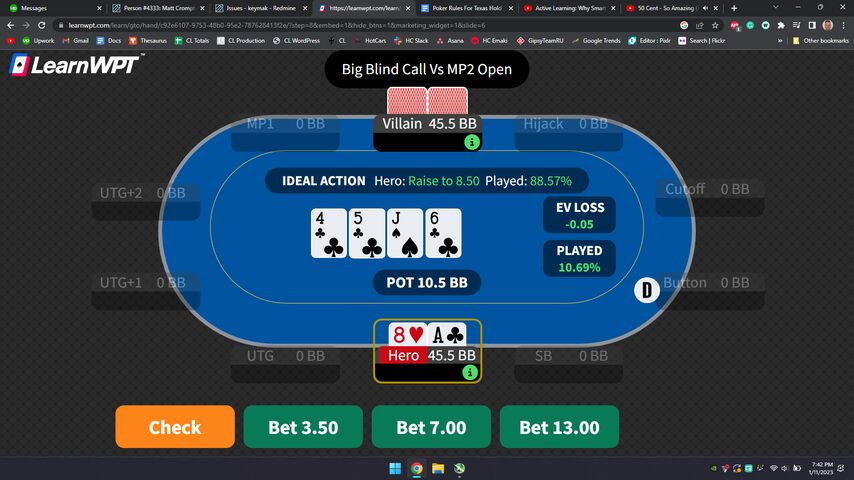
Poker Coaches
Professional coaching can cost anywhere from $20 up to hundreds per hour. It’s best to find coaches with proven records and a solid reputation. Be wary of anyone promising unrealistic profits. Some websites have a classified section for coaching. Users and coaches have the chance to review the experience for transparency.
Other popular coaching platforms include UpSwing Poker and Run It Once Poker.













